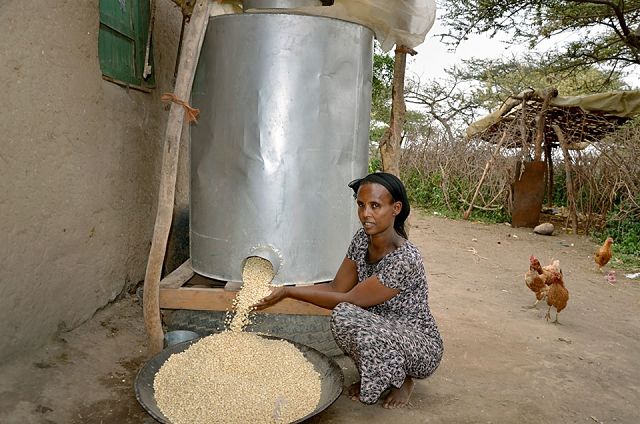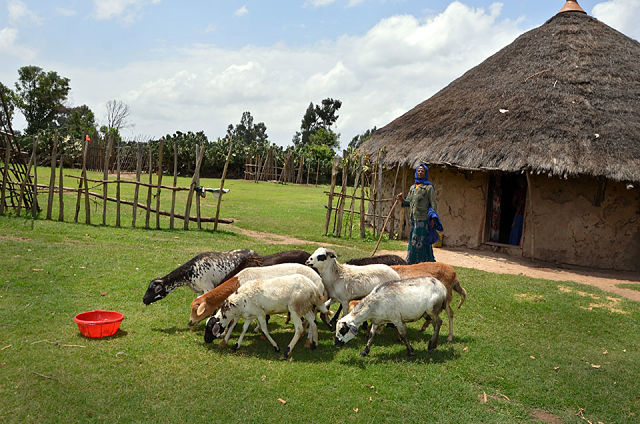 Through women’s cooperatives, a joint UN programme provides training in agricultural techniques, improved seeds and time-saving machinery, while also granting loans and encouraging saving. (Photo: Tulule Knife uses the modern grain storage facility known as metallic silo that her village administration awarded her for successfully applying the line sowing approach to her wheat farm. It also keeps her grain safer. Courtesy UN Women/Fikerte Abebe)
Through women’s cooperatives, a joint UN programme provides training in agricultural techniques, improved seeds and time-saving machinery, while also granting loans and encouraging saving. (Photo: Tulule Knife uses the modern grain storage facility known as metallic silo that her village administration awarded her for successfully applying the line sowing approach to her wheat farm. It also keeps her grain safer. Courtesy UN Women/Fikerte Abebe)
Women’s cooperatives boost agriculture and savings in rural Ethiopia
In most parts of the Dodola district, 300 km south of Ethiopia’s capital, Addis Ababa, slow-moving oxen plowing opens stretches of farmland. But in one field, a red tractor is speedily tilling women’s cooperative owned farmland ahead of the rainy season.
For Kamso Bame, a widowed mother of 12 and owner of 2.5 acres of land, the tractor has shaved off days of grueling labour.
Bame is among more than 2,000 smallholder women farmers involved in a joint UN programme to boost sustainable agricultural production and rural women’s economic empowerment, through training and cooperatives.
After Bame joined the women’s cooperative in her village of Wabi Burkitu, she received a 7,000 Birr (259 USD) loan, which she used to start a cart-transport service. Bame uses her daily average income of 400 Birr (15 USD) to support her children, four of whom live independently. Her membership also enables her to cultivate the land using a tractor owned by the cooperative.
“Before the death of my husband, whenever the rainy season came, I remember him spending three to four days ploughing the family’s land with the pair of oxen we owned. Each day, he and the oxen used to come back home exhausted,” she recalls. “Today, it is different, as I am privileged to farm the same land with a tractor and it takes a maximum of three hours.”

Kamso Bame takes care of her sheep by her grass-roofed house. Among her long-term plans are to build a new roof with corrugated iron sheets. (Photo: UN Women/Fikerte Abebe)
Fast facts on women in agriculture
Women comprise an average of 43 per cent of the agricultural labour force in developing countries, varying considerably across regions from 20 per cent or less in Latin America to 50 per cent or more in parts of Asia and Africa. Less than 20 per cent of landholders are women. Gender differences in access to land and credit affect the relative ability of female and male farmers and entrepreneurs to invest, operate to scale, and benefit from new economic opportunities. Learn more ►
The tractor is used to farm the land owned by the cooperative as a team, as well as each member’s own land. The cooperative also rents it out to other farmers in 26 villages across the district, whose population is more than 240,000. Charging up to 1,500 Birr (56 USD) per hectare, the cooperative currently earns over 6,000 Birr (222 USD) per day, on average.
—
Join the conversation on Twitter and Facebook.

























